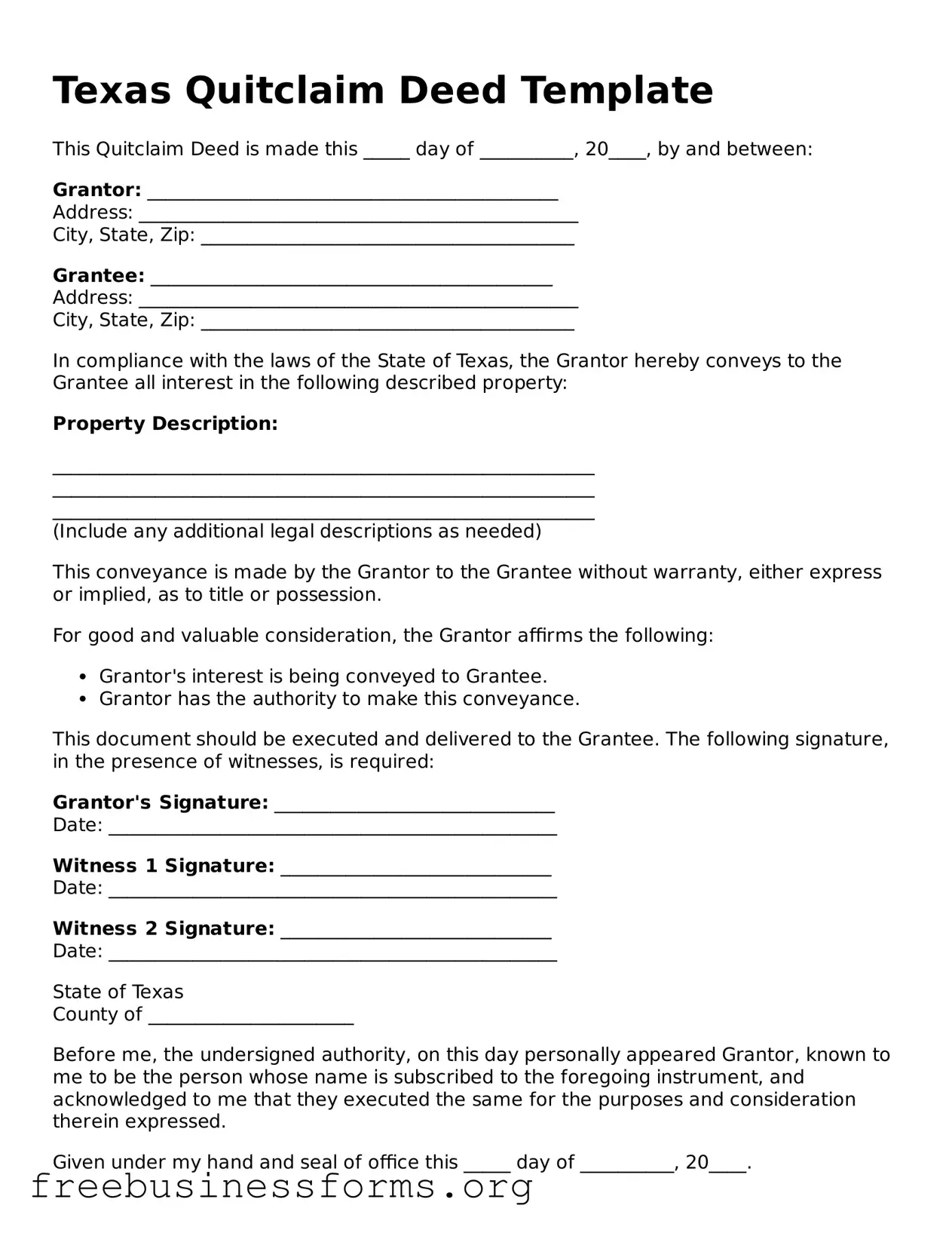Texas Quitclaim Deed Template
This Quitclaim Deed is made this _____ day of __________, 20____, by and between:
Grantor: ____________________________________________
Address: _______________________________________________
City, State, Zip: ________________________________________
Grantee: ___________________________________________
Address: _______________________________________________
City, State, Zip: ________________________________________
In compliance with the laws of the State of Texas, the Grantor hereby conveys to the Grantee all interest in the following described property:
Property Description:
__________________________________________________________
__________________________________________________________
__________________________________________________________
(Include any additional legal descriptions as needed)
This conveyance is made by the Grantor to the Grantee without warranty, either express or implied, as to title or possession.
For good and valuable consideration, the Grantor affirms the following:
- Grantor's interest is being conveyed to Grantee.
- Grantor has the authority to make this conveyance.
This document should be executed and delivered to the Grantee. The following signature, in the presence of witnesses, is required:
Grantor's Signature: ______________________________
Date: ________________________________________________
Witness 1 Signature: _____________________________
Date: ________________________________________________
Witness 2 Signature: _____________________________
Date: ________________________________________________
State of Texas
County of ______________________
Before me, the undersigned authority, on this day personally appeared Grantor, known to me to be the person whose name is subscribed to the foregoing instrument, and acknowledged to me that they executed the same for the purposes and consideration therein expressed.
Given under my hand and seal of office this _____ day of __________, 20____.
Notary Public Signature: _________________________
My commission expires: __________________________________
